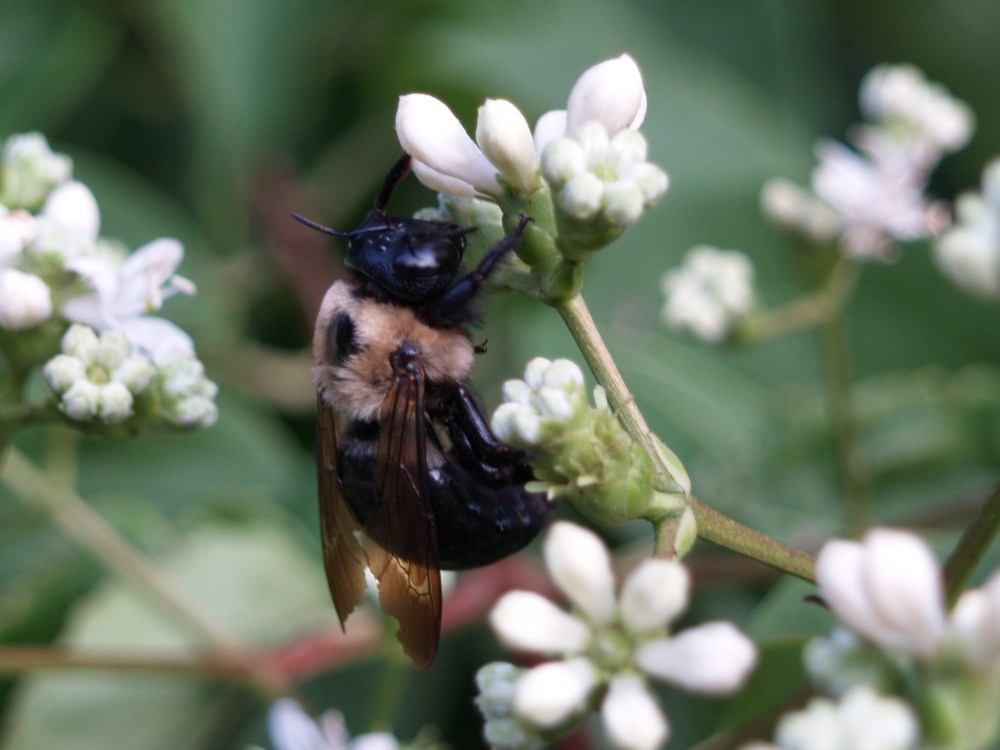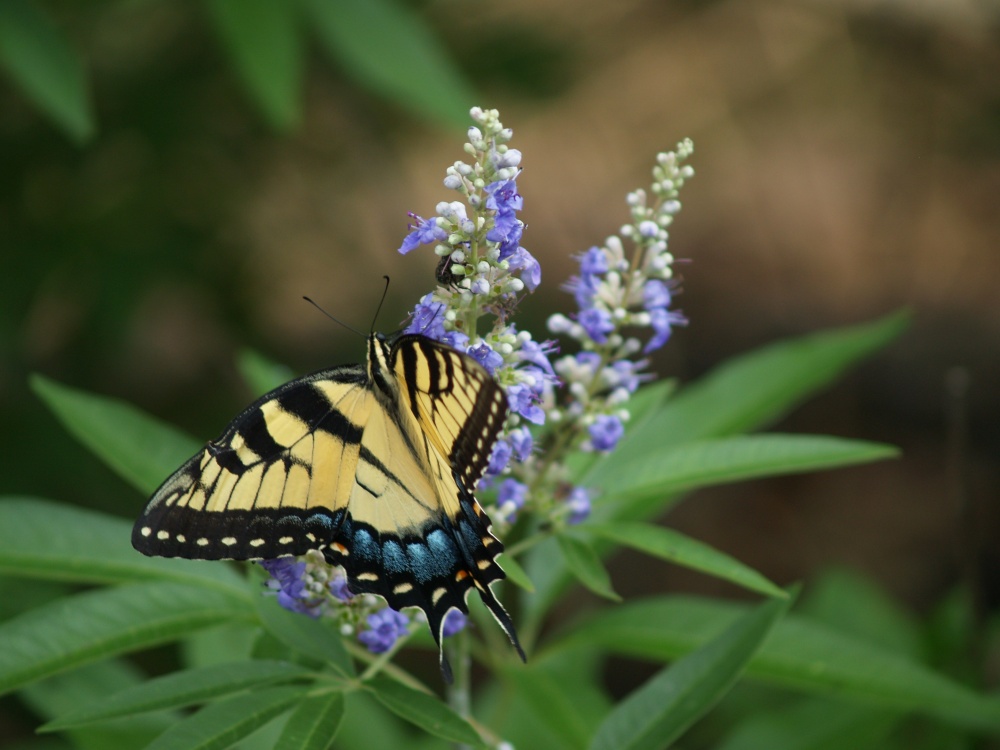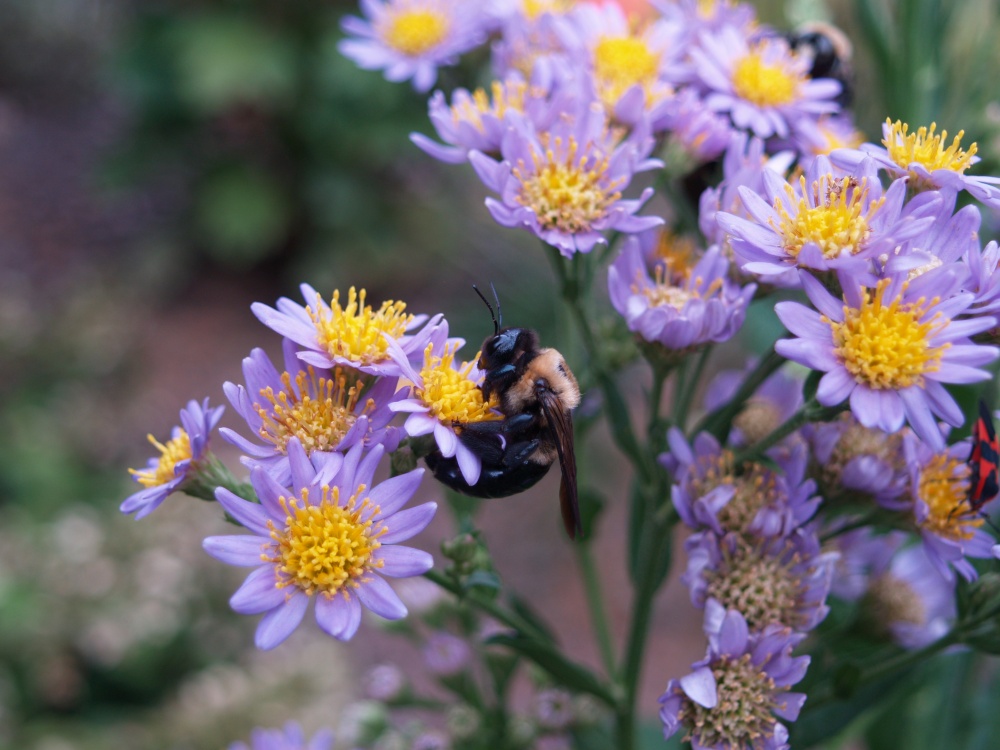The Seven Son tree (Heptacodium miconioides, below) was a favorite of pollinators (mostly bumblebees and wasps), and it is unfortunate that it was destroyed in a storm a year ago. I’m mostly satisfied with the red horsechestnut (Aesculus x carnea) planted in its place, but it is not a suitable replacement as far as the bees are concerned.
I’ve read recently that many gardeners see a steep downturn in the number of butterflies, bees, and other pollinators in their gardens this year, but I see no evidence of this. To the contrary, this year there have been significant increases in dragonflies (that are not significant pollinators) and butterflies, and no noticeable changes in the number of bees, wasps (below), and hoverflies. In recent years there has been a decline in the number of honeybees, but the populations of other pollinators appear to be fine in this garden.
Until the past week, on any sunny afternoon the wide spreading clump of Mountain mint (Pycnanthemum virginium, below) was a magnet for every buzzing beast within two counties. I have become quite careless in taking photographs in close proximity to various bees and wasps, but still I exercise caution around the mint. A single sting is not so bad, though it is a rare occurrence for me, but I hesitate to chance disturbing the numbers of nasty looking wasps present on the mountain mint.
I suspect that the fast spreading mountain mint has filled any void due to the loss of the Seven Son tree, and now it has reached the point where it must be tamed in future years. I heartily recommend mountain mint for a native or pollinator garden, but the gardener must be aware that it will quickly fill into its allotted space, and more. I advise that mountain mint be located between larger shrubs and trees that are too large for it to overwhelm, for anything else in its path will hardly slow it down.
If I were forced to select only one flower to please the pollinators, that would be Joe Pye weed (Eutrochium purpureum ‘Little Joe’, above). While mountain mint is dominated by bees, wasps, and hoverlfies, Joe Pye is favored by Tiger Swallowtail butterflies. This summer the swallowtails moved between the Joe Pye and Chaste tree (Vitex agnus-castus, below), and later to the panicled hydrangeas (Hydrangea paniculata) in unusually high numbers.
At the start of autumn there are fewer blooms, and fewer pollinators as cooler temperatures arrive, but bumblebees are attracted in numbers to toad lilies (Tricyrtis hirta ‘Miyazaki’, below). The intricately constructed flowers are perfectly formed so that sticky pollen is heaped onto the hairy backside of the bumblebee as it forages deep into the flower for nectar.
In another week the Tatarian daisies (Aster tataricus ‘Jindai’. below) will flower, and as these fade a month later the season for the pollinators will end. At one time ‘Jindai’ dominated the area behind the large koi pond, but now the panicled and oakleaf hydrangeas (Hydrangea quercifolia) have spread to threaten it. Several weeks ago I carved out a space for the tall growing aster so that it will be fine this year, but I fear that the woody shrubs will eventually capture this space. That will be a loss for the bumblebees that visit it regularly in early autumn.
Haven’t seen near as many honey bees for the past several years. In Mississippi, there would be thousands on the holly flowers. This summer, in Missouri, the tassels were covered with thousands of honey bees. It was a welcome sight. Have no clue where they came from or where they went.